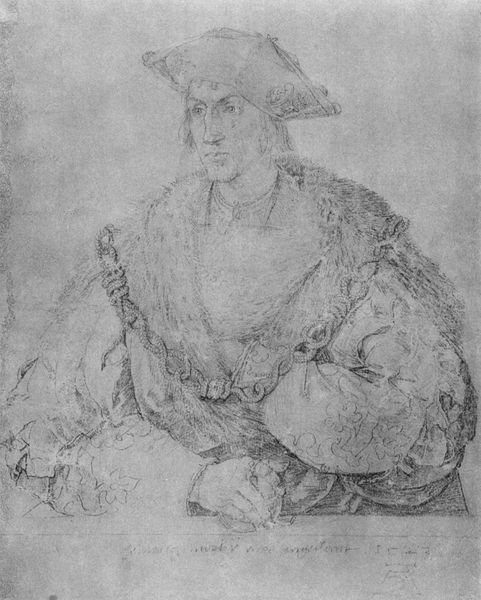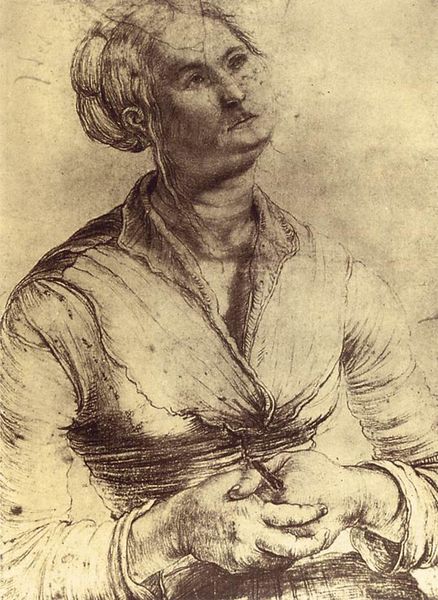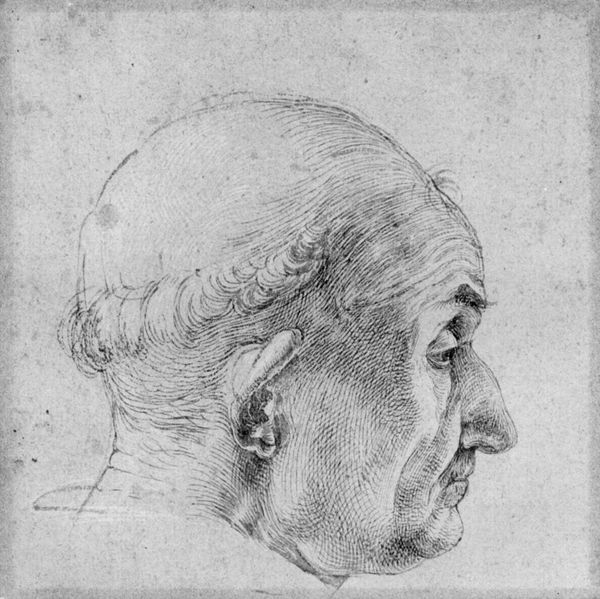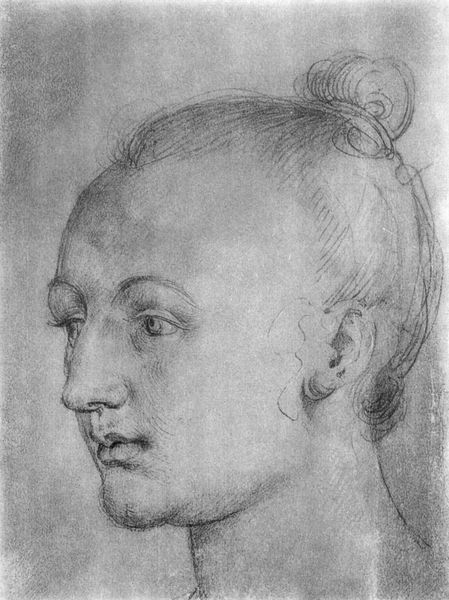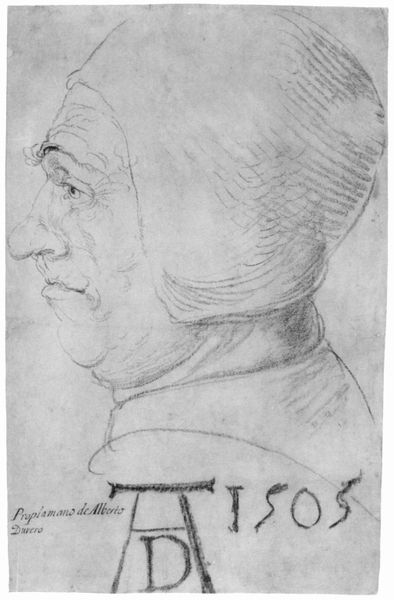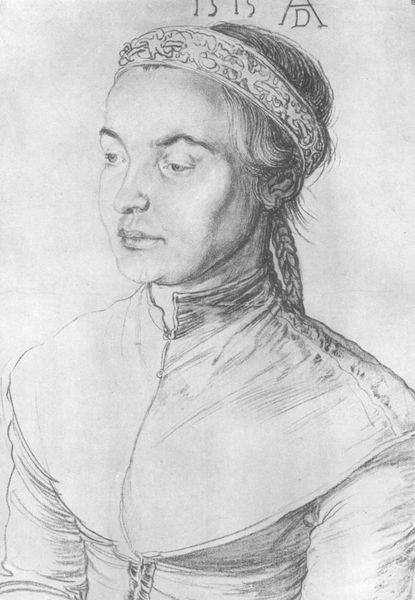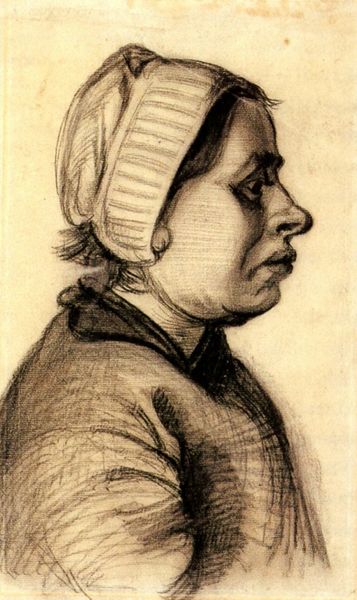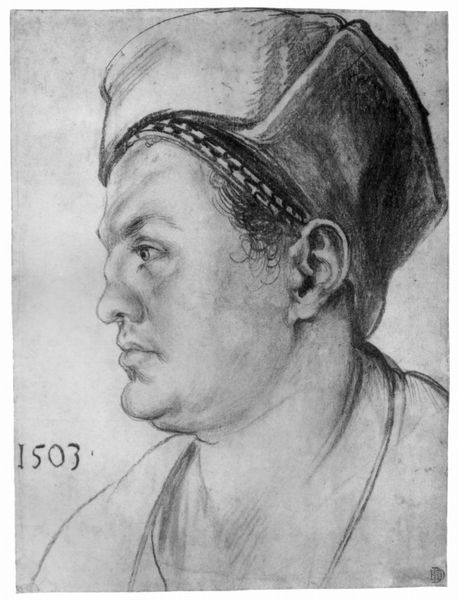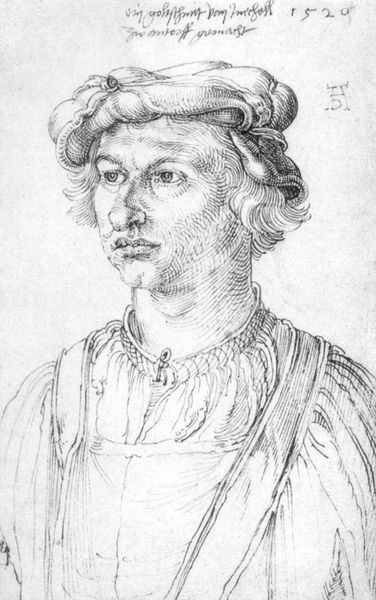
#
portrait
#
pencil drawn
#
amateur sketch
#
facial expression drawing
#
head
#
face
#
pencil sketch
#
portrait reference
#
idea generation sketch
#
male-portraits
#
sketchwork
#
sketch
#
nose
#
portrait drawing
#
pencil work
#
forehead
#
initial sketch
Copyright: Public domain
Albrecht Dürer sketched "Sultan Soliman," likely around 1526, during a time of increasing interactions between Europe and the Ottoman Empire. This image is more than just a portrait; it's a window into the complex dynamics of cultural exchange and representation of the 'other' in the Renaissance. Dürer never directly encountered Soliman, also known as Suleiman the Magnificent. The artist based his drawing on second-hand accounts and other artistic sources, reflecting a common practice of the time. The emphasis on Soliman’s turban, for example, highlights the fascination with exotic elements of Ottoman culture, but also marks him as different, and "not European". I wonder, what was Dürer trying to convey by depicting him? Is it respect, curiosity, or something else entirely? The drawing invites us to consider the power of images in shaping perceptions of identity and cultural difference. It is a potent reminder of how we see, interpret, and represent those who are different from us.
Comments
No comments
Be the first to comment and join the conversation on the ultimate creative platform.

